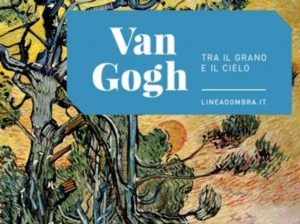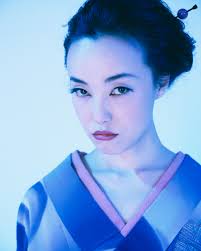VAN GOGH, Basilica Palladiana, Vicenza
Ha finalmente aperto al pubblico la più grande mostra iconografica mai realizzata in Italia dedicata al grande pittore impressionista. Sono esposte più di 40 dipinti ed 80 disegni che hanno lo scopo di ricostruire la vita del grande pittore.
La mostra è aperta dal lunedì al giovedì dalle 9.00 alle 18.00, dal venerdì alla domenica dalle 9.00 alle 20.00 ed è raggiungibile dal nostro Hotel Relais Santa Corona in meno di 5 minuti a piedi. Per l’acquisto dei biglietti si prega di consultare il sito di linea d’Ombra:
Ci introdurranno all’universo del pittore numerose lettere inviate principalmente al fratello Theò Van Gogh; saranno il filo conduttore della mostra, come fogli di un diario.
Van Gogh nasce in Olanda nel 1853, ha una formazione che si ispira al realismo paesaggistico dei pittori di Barbizon e di Millet. Uno dei modi per conoscere il pittore è attraverso le lettere che scambiava con il fratello con un cui si educono i suoi pensieri sull’arte e la sua visione del mondo oltre all’approccio all’opera d’arte. Van Gogh è spinto dal desiderio di aiutare il prossimo fin dalla giovane età e la svolta artistica avvenne perchè intravide nella pittura un mezzo per diffondere il messaggio evangelico; la prima produzione di opere fu in Olanda a Nuenen, dove abitavano i genitori che lo sostennero economicamente e psicologicamente, preoccupati per il suo temperamento malinconico. Sin trasferì successivamente ad Anversa e Parigi, trovando il piccolo villaggio di Nuenen limitante per la sua vocazione artistica. Ad Anversa scoprì Rubens, Hals e Rembrandt. A Parigi Van Gogh si riunisce all’amato Theò e produce quadri più gioiosi. A Parigi conosce quelli che consideriamo oggi i più grandi maestre della pittura moderna: Toulouse-Lautrec, Monet, Degas, Sisley, Signac, Gauguin e molti altri. Van Gogh a parigi acquista una sicurezza artistica e personale che sfocerà in alcolismo e vanità, molto lontana dal misticismo religioso degli esordi. Nel 1888-89 si trasferisce ad Arles, in Provenza, dove lavorò senza sosta ispirato dalla natura rigogliosa che lo circondava. Van Gogh sognava di fondare una comunità solidale di artisti e riuscì a convincere l’amico Gauguin a trasferirsi nella famosa casa gialla dove risiedeva. Il solidalizio dei due pittori fu purtroppo però infelice e culminò in una violenta lite in cui Van Gogh si taglio un lobo: Gauguin partì e Vincent fu internato in varie strutture psichiatriche dove continuò a dipingere. I suoi quadri iniziarono finalmente ad riscuotere successo e Vincent da Saint Remy si ricongiunge nuovamente a Theò a Parigi. Nel 1890 una sera, dopo essere stato in campagna a dipingere, rientrò a casa con una ferita da pistola che si era auto inferto. Le spoglie di Vincent e Theò giacciono assieme al cimitero di Auvers, in Francia.
Nelle sale cinematografiche italiane i giorni 16, 17 e 18 ottobre sarà proiettato inoltre il film Loving Vincent, di Dorota Kobiela e Hugh Welchman, lungometraggio interamente dipinto realizzato in 6 anni, prima interpretato da veri attori poi trasformato in film di animazioni da 125 artisti che hanno riprodotto su tela 65mila inquadrature. I suoi personaggi raccontano così la vita del pittore.
He has finally opened to the public the largest iconographic exhibition ever made in Italy dedicated to the great Impressionist painter. More than 40 paintings and 80 drawings have been exhibited to rebuild the life of the great painter.
The exhibition is open from Monday to Thursday from 9am to 6pm, from Friday to Sunday from 9am to 8pm and is reachable from our Hotel Relais Santa Corona in less than 5 minutes on foot. To buy tickets, please visit the Shadow Line website:
They will introduce us to the painter’s universe numerous letters sent mainly to Brother Theo Van Gogh; will be the thread of the exhibition, as a diary sheet.
Van Gogh was born in Holland in 1853 and has a training that is inspired by the landscaping realism of Barbizon and Millet painters. One of the ways to get to know the painter is through the letters he exchanged with his brother to whom his thoughts on art and his world vision are taught, as well as his approach to artwork. Van Gogh is driven by the desire to help his neighbor from the young age, and the artistic turn was because he saw in painting a means of spreading the Gospel message; The first production was in the Netherlands in Nuenen, where the parents who supported him economically and psychologically were concerned, worried about his melancholy temperament. Sin later moved to Antwerp and Paris, finding the small village of Nuenen limiting for his artistic vocation. In Antwerp he discovered Rubens, Hals and Rembrandt. In Paris, Van Gogh meets the beloved Theò and produces more joyful paintings. In Paris, we know what we consider today as the greatest masters of modern painting: Toulouse-Lautrec, Monet, Degas, Sisley, Signac, Gauguin and many more. Van Gogh in Paris acquires artistic and personal security that will blossom into alcoholism and vanity, far from the early mysticism of the early days. In 1888-89 he moved to Arles, Provence, where he worked unabated, inspired by the luxuriant nature surrounding him. Van Gogh dreamed of establishing a community of artists together and succeeded in convincing his friend Gauguin to move to the famous yellow house where he lived. The solidarity of the two painters was, unfortunately, unhappy and culminated in a violent struggle in which Van Gogh cut a lobe: Gauguin left and Vincent was interned in various psychiatric structures where he continued to paint. His paintings finally began to be successful and Vincent from Saint Remy joins again at Theò in Paris. In 1890, one evening, after being in the countryside to paint, he returned home with a gunshot wound he had taken. The remains of Vincent and Theò lie with the cemetery of Auvers, France.
In the Italian cinemas on 16th, 17th and 18th October, will be screened the film “Loving Vincent”, by Dorota Kobiela and Hugh Welchman, a fully-featured feature film realized in 6 years, first played by real actors, then transformed into animated films by 125 artists have played on 65,000 shots on canvas. His characters tell the painter’s life.


